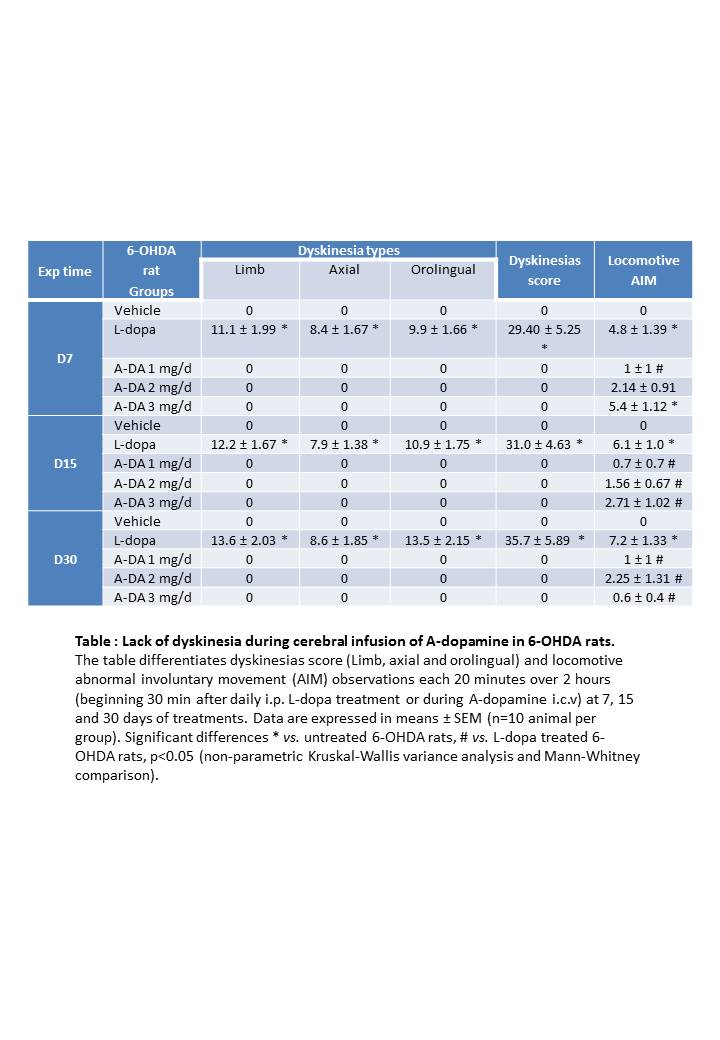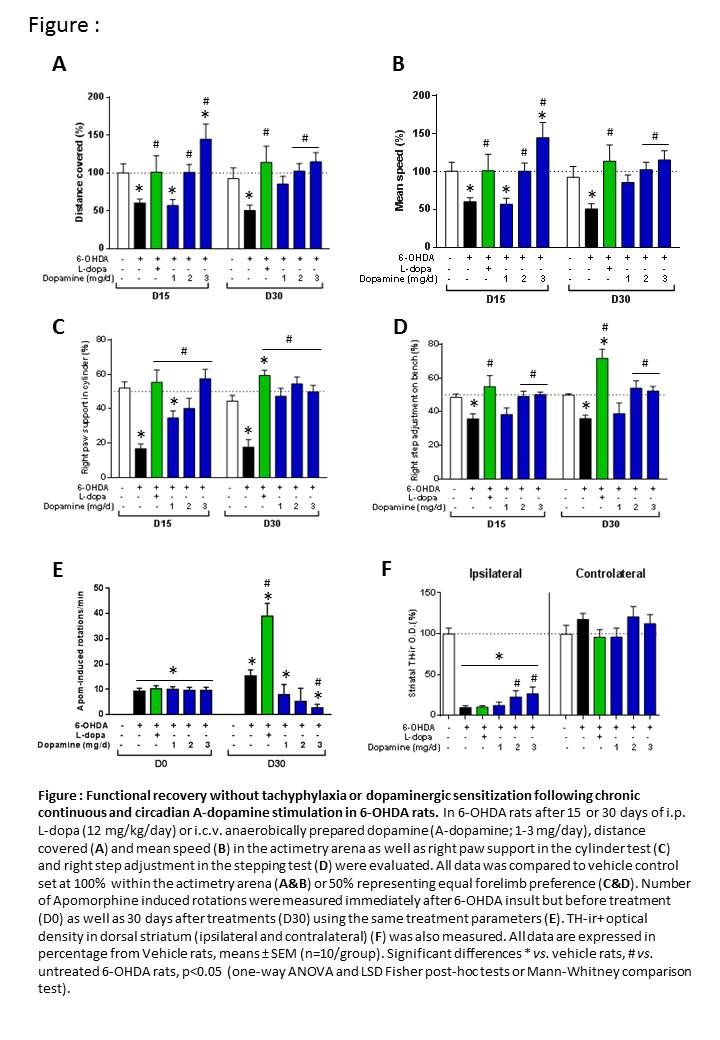Session Information
Date: Tuesday, June 6, 2017
Session Title: Therapy in Movement Disorders
Session Time: 1:45pm-3:15pm
Location: Exhibit Hall C
Objective: In this study, we aim to demonstrate that continuous i.c.v. infusion of dopamine close to the striatum is a feasible and highly efficient treatment as compared to classical peripheral L-dopa therapy.
Background: In Parkinson’s disease (PD) depletion of dopamine in the nigro-striatal pathway, as the main pathological hallmark, requires continual circadian and focal restoration. Current predominant treatment with intermittent oral administration of its precursor, Levodopa (L-dopa), fails to restore this dopaminergic striatal neurotransmission due to pharmacological drawbacks that trigger dyskinesia. Equally, continuous intracerebroventricular (i.c.v.) administration of dopamine previously failed through unresolved accelerated dopamine oxidation and tachyphylaxia. We aim to overcome prior challenges.
Methods: We prepare dopamine in anaerobia (A-dopamine) as compared with aerobic-prepared dopamine (O-dopamine) with and without the conservator (sodium metabisulfite, SMBS). We assessed the dose response curves of continuous i.c.v infusion of A- and O- dopamine in the acute MPTP mice model (24 hours a day) and in the 6-OHDA-lesioned rat (circadian administration).
Results: Continuous i.c.v infusion of A-dopamine during 7 days restored MPTP mice motor function with a larger therapeutic index compared to intra-peritoneal L-dopa treatment. A-dopamine induced a dose dependent neuroprotection of the nigro-striatal dopaminergic neurons, which was not observed with O-dopamine and L-dopa. A-dopamine in the 6-OHDA-lesioned rat improved motor activity during 30 days without occurrence of tachyphylaxia. Importantly, A-dopamine did not induced dyskinesia or behavioral sensitization, conversely to peripheral L-dopa treatment. Nigro-striatal pathways and peripheral organs analysis demonstrated histological safety of A-dopamine.
Conclusions: Continuous i.c.v infusion of A-dopamine is highly efficient on the motor handicap without induction of dyskinesia and tachyphylaxia and is safe with a large therapeutic index. This could represent a new therapeutic strategy aiming at restoring the dopamine neurotransmission.
To cite this abstract in AMA style:
C. LALOUX, F. GOUEL, C. LACHAUD, K. Timmerman, A. Jonneaux, C. Moreau, R. BORDET, J.-c. DEVEDJIAN, D. DEVOS. Intracerebroventricular administration of dopamine: A new therapeutic concept for Parkinson’s disease? [abstract]. Mov Disord. 2017; 32 (suppl 2). https://www.mdsabstracts.org/abstract/intracerebroventricular-administration-of-dopamine-a-new-therapeutic-concept-for-parkinsons-disease/. Accessed December 29, 2025.« Back to 2017 International Congress
MDS Abstracts - https://www.mdsabstracts.org/abstract/intracerebroventricular-administration-of-dopamine-a-new-therapeutic-concept-for-parkinsons-disease/


